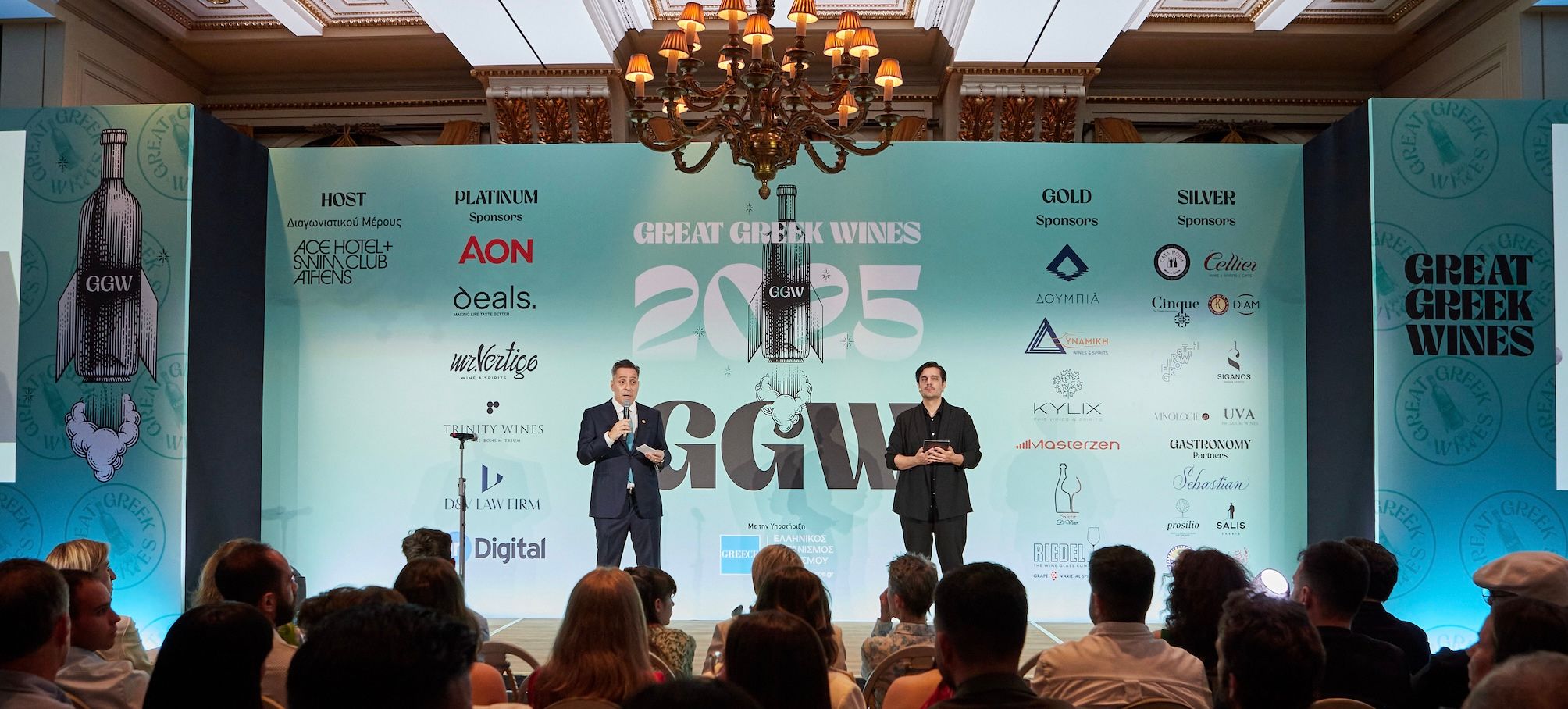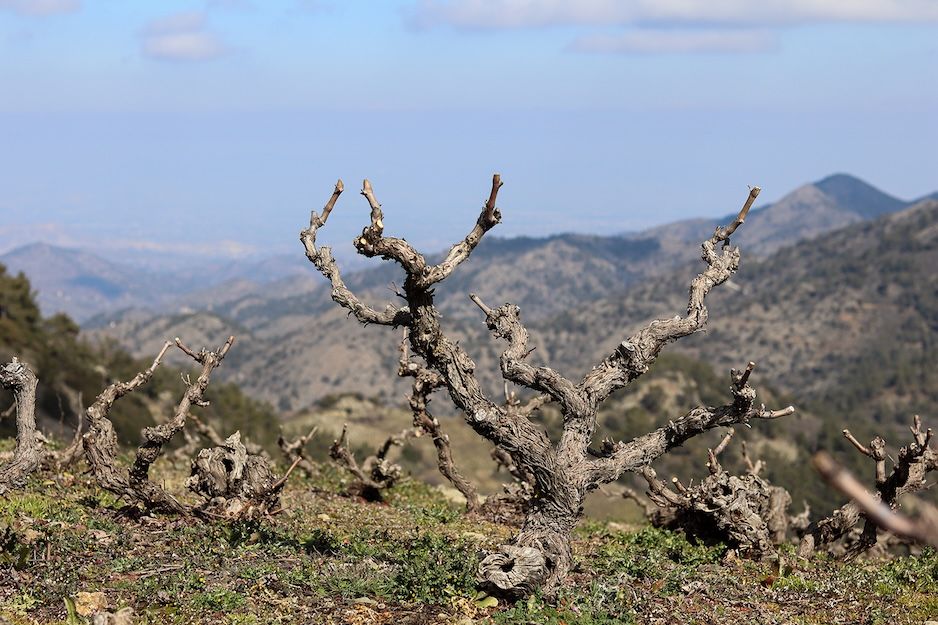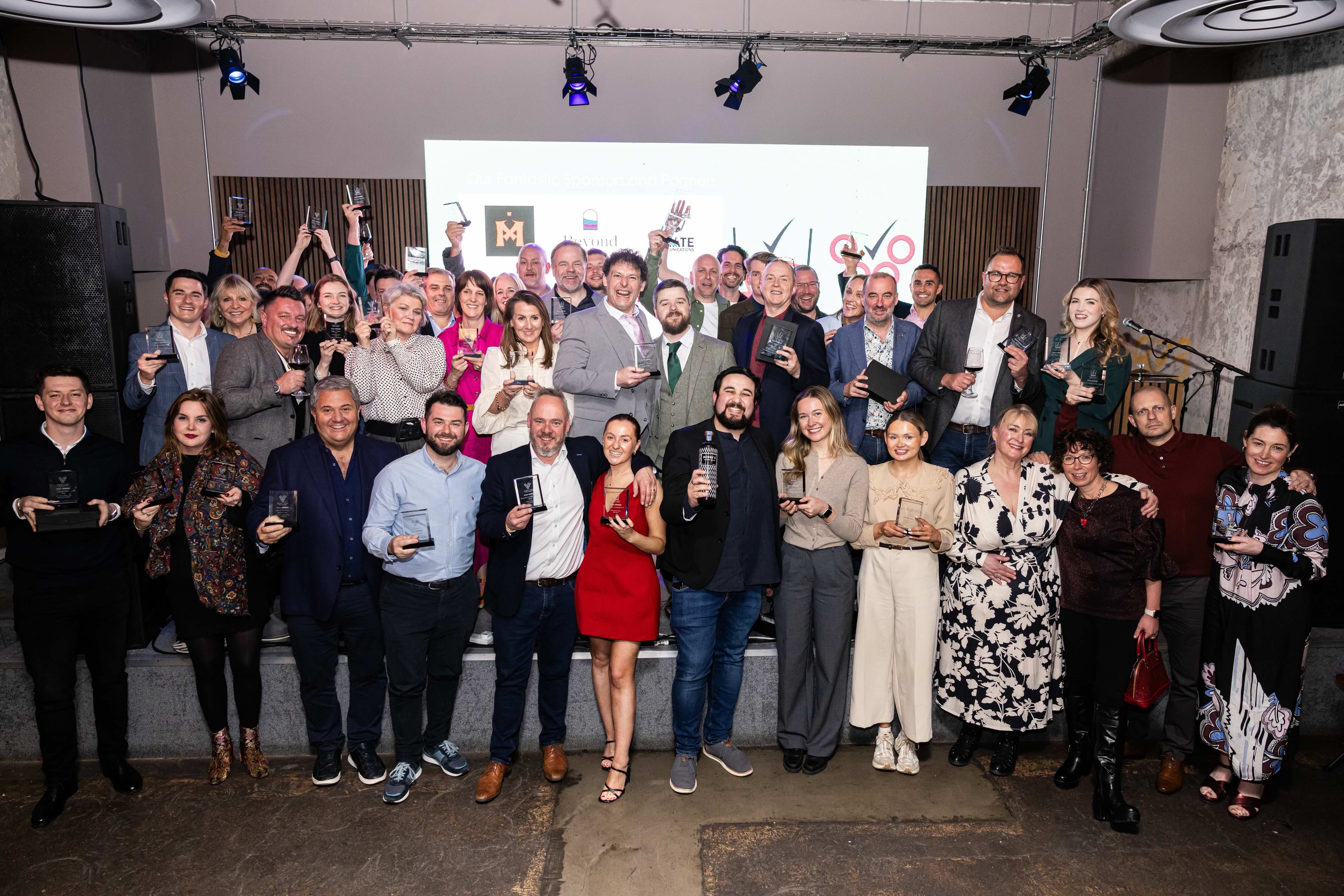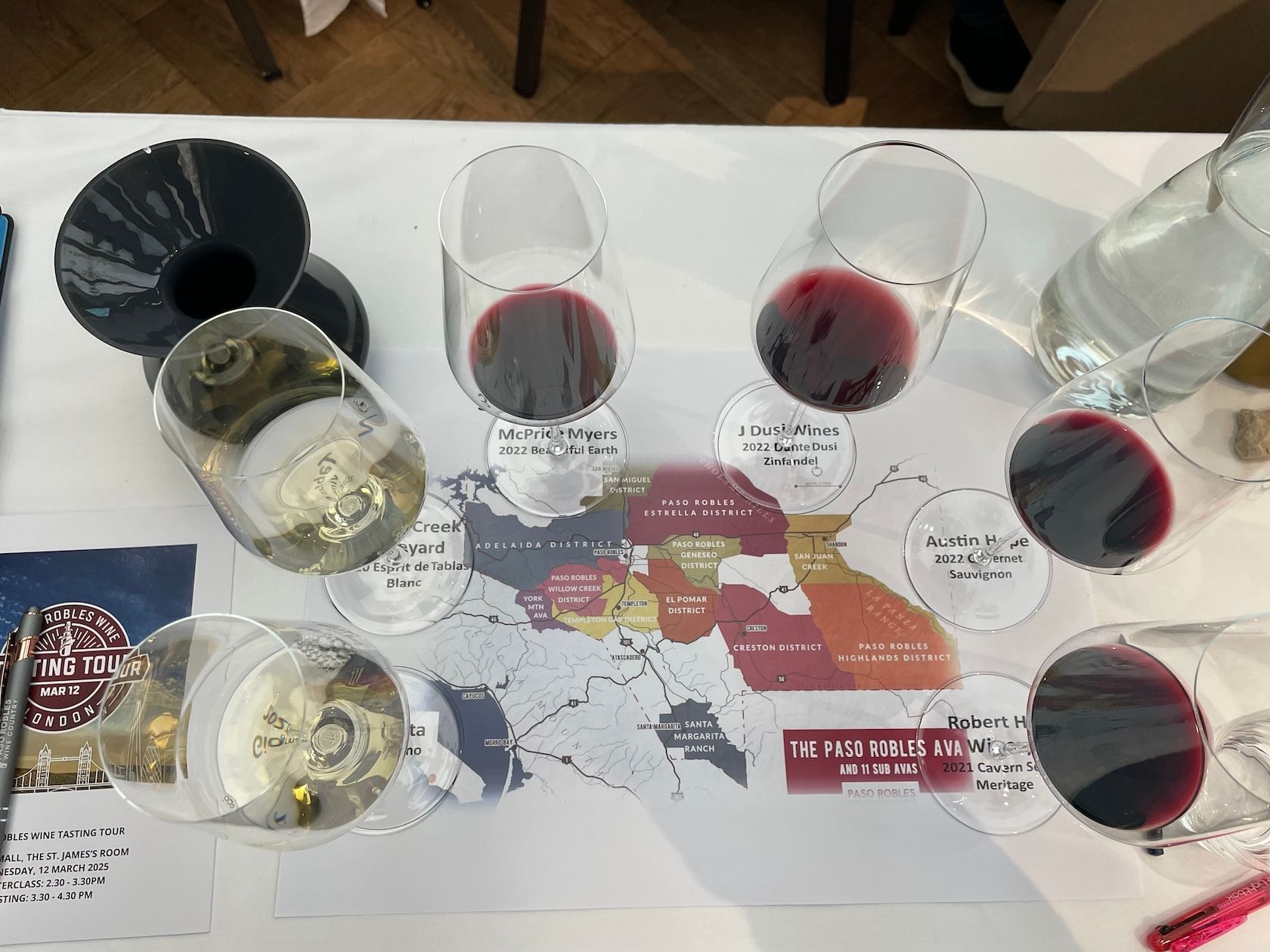“When (my father) Giuseppe discovered about the heritage of the estate he was alone so he called the entire family together and told them ‘let’s see you all at home’ and when he came he was quite strange… his expression was not something easy to understand,” recalls Paolo.
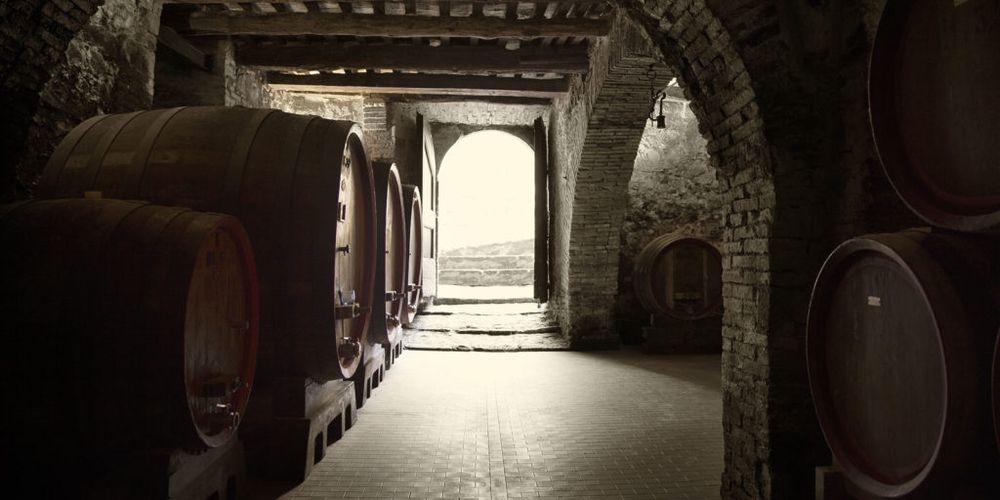
The ancient cellars at Ciacci Piccolomini d’Aragona
It’s the thing of movie scripts. The cast includes a hard-working farmer, a rich countess, a bishop’s palace dating back to the Seventeenth Century, 220 hectares of rolling Tuscan hills and farmland, and some of the world’s best wine. If the film was made in Italian it would have been directed by Luchino Visconti with the part of farmer Giuseppe Bianchini played by Burt Lancaster or Robert De Niro with the countess Elda Ciacci played by none other than Sophia Loren.
The film would involve quite a few sunset scenes, naturally, cinematographer Vittorio Storaro capturing perfectly the purple hue as it dances off the plump bunches of Sangiovese that will be used to make the estate’s top Brunello di Montalcino.
But Ciacci is a real-life character, a countess who in the early Twentieth Century married count Alberto Piccolomini d’Aragona a direct descendant of Pope Pious II and lived in the palace which then became known as the Ciacci Piccolomini d’Aragona palace.
Giuseppe Bianchini was the farmer of the estate who managed the vines, olive trees and the rest of the 220 hectares of this stunning Tuscan property. For years he worked tirelessly keeping the estate running like clockwork, even after the count died.
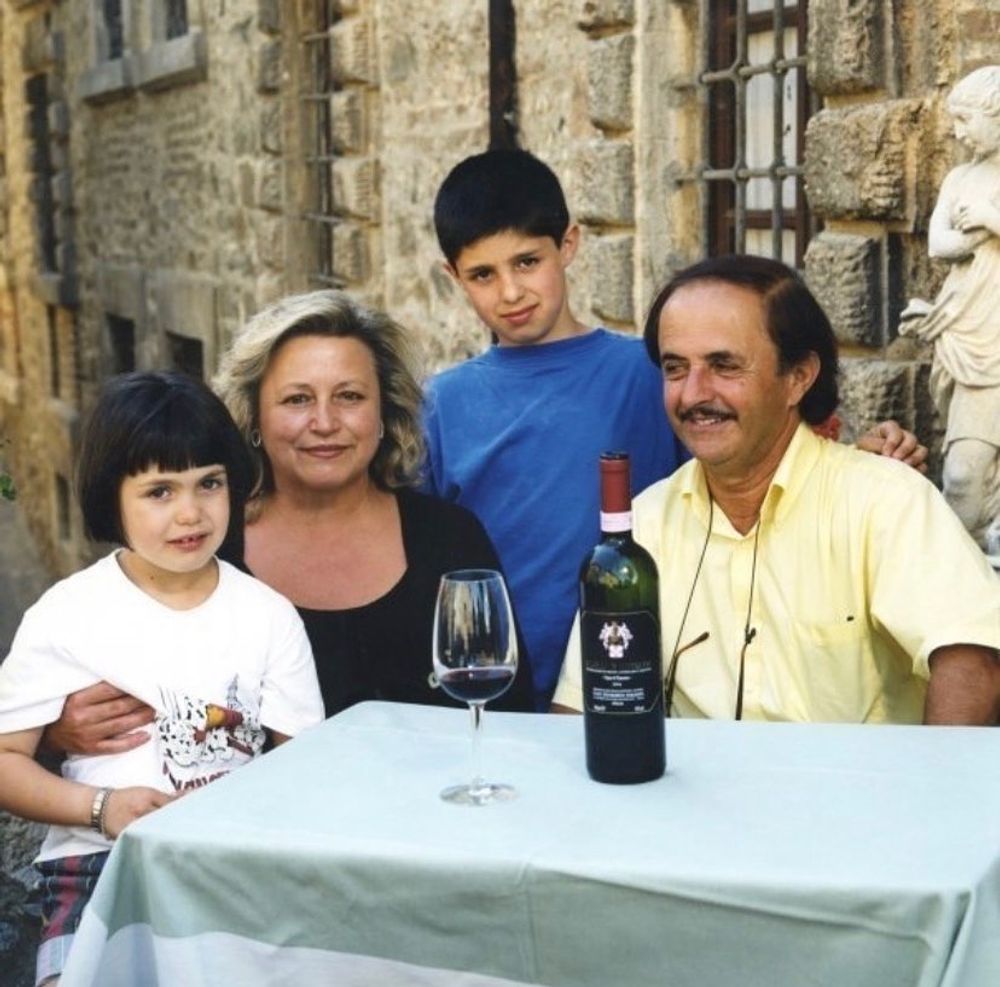
Giuseppe Bianchini (r) with his wife Anna and two children Lucia and Paolo
But then on a sad day in 1985, the countess herself died – an event that could have seen Giuseppe say ‘arrivederci’ to his life’s work and seek gainful employment elsewhere. Except for one small detail. Elda gave the entire estate, all 220 hectares of it, a palace with historic cellars, vines, trees, everything to Giuseppe – lock stock and barrel – as a gift.
Giuseppe’s son Paolo Bianchini, sitting in the bar of It the new, on-trend Mayfair Italian restaurant recalls the day.

Paolo Bianchini, It Restaurant Mayfair, holding a bidon bearing the crest of the estate. A keen cyclist, Paolo has also founded ASD Brunello Bike, an amateur cycling club to support charity.
“When Giuseppe discovered about the heritage he was alone so he called the entire family together and told them ‘let’s see you all at home’ and when he came he was quite strange his expression was not something easy to understand and then he started to cry… he explained everything to the family and he said that the last words that were written by the Countess were ‘I am sure that by doing this my name will be famous all over the world, because Giuseppe knows exactly what I want and he has the philosophy to produce a great quality winery’.”
In the (yet to be made) movie version of this story the Ennio Morricone score would build to a crescendo.
Maintaining the legacy
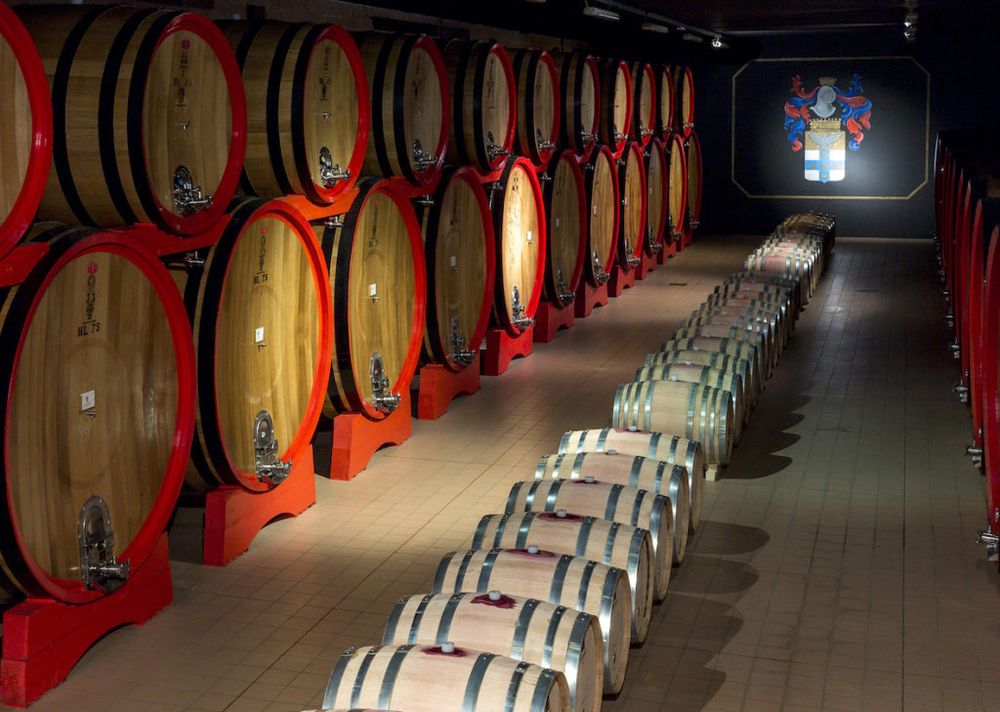
The new cellars to bring the winery into the Twenty First Century
Since that day Giuseppe and now his two children Paolo and Lucia Bianchini have done just that – turning the estate into one of the top producers in Montalcino, planting new vines, introducing a Brunello in 1990, increasing production, introducing new varietals, building a state-of-the-art winery and new cellar – and raising the quality threshold across the board.
Although the palace has cellars dating back centuries, wine historically was only made for personal consumption and to give to those working on the estate.
Today Ciacci Piccolomini d’Aragona produces 74,000 bottles of Brunello di Montalcino DOCG from the youngest Sangiovese vines and then, in the best vintages, 37,000 bottles of Brunello di Montalcino DOCG Pianrosso from the oldest vines grown on a 12 ha vineyard that has the best terroir. Both wines are aged in large format Slovenian oak, the Pianrosso for one year extra than the straight Brunello, with eight months in bottle.
In perfect vintages the estate produces a Brunello di Montalcino DOCG Riserva Santa Caterina d’Oro which is aged in smaller format Solvenian oak, aged for 36 months and then has a year in bottle. This has only been produced in 2004, 2006, 2007, 2010, 2012 and 2015 vintages.
Given that critic James Suckling gave 100 points to the latest vintage of Brunello di Montalcino DOCG Pianrosso 2015, one can only wonder what he will give the Santa Caterina d’Oro when it comes out next year. Presumably his palate will ‘go to 11’!
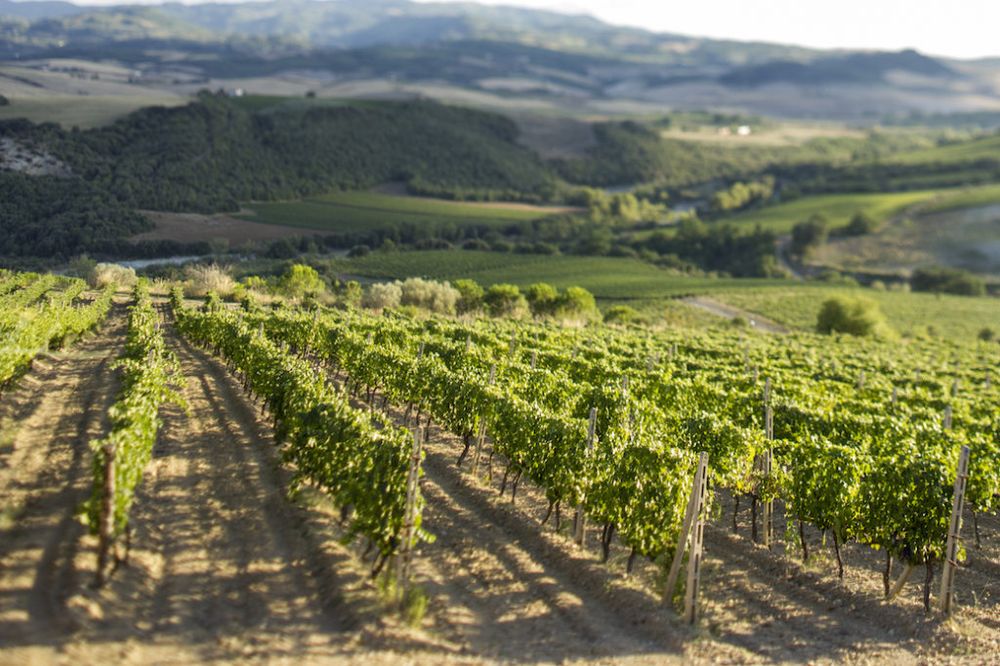
Piaggione vineyard, Pianrosso
Ciacci Piccolomini d’Aragona also makes two earlier-drinking Rosso di Montalcino DOC, 68,000 bottles of the Rosso and 10,000 of the Rossofonte which has more rigorous selection and gets released 12 months after the Rosso. It also produces a 100% Syrah (one of the first estates in Montalcino to do so) called Fabivs, and a Cabernet Sauvignon/ Merlot blend called Ateo (8,000 bottles of the former and 25-27,000 bottles of the latter). Both these wines are made under the ‘umbrella’ DOC of Sant’Antimo that allows these grape varieties where Montalcino only allows Sangiovese by law.
And, the estate produces its own olive oil, grappa and is highly active in oeno-tourism.
Apart from upgrading the winemaking and expanding production, Paolo and Lucia have increased penetration into overseas markets. 70% of all the wine made is exported with the US accounting for 40%, Germany, the UK and Sweden being other key markets.
And so down to tasting the new vintages

Ciacci Piccolomini d’Aragona, Rosso Di Montalcino Rossofonte 2015
This field selection from a three hectare parcel of Sangiovese Grosso, spending one year in 7.5-20 hl Slovenian oak and then eight months in bottle is great value (£26 retail). In the glass it is see-through ruby, with complex aromas of ripe cherries, liquorice, pipe tobacco; the mouthfeel is deceptive – at first rounded, lovely ripe tannins and then a little grip on the finish.
Ciacci Piccolomini d’Aragona, Brunello Di Montalcino 2015
Mid-deep ruby; lifted aromas of black fruits, liquorice, potpourri; the palate is so smooth and voluptuous, fruity, slightly spicy, the ripe tannins and acidity are so well integrated, terrific balance and (discreet but present) structure. The finish is very long with a little lick of blood orange, more so than on the other Brunellos. This is a new release or, as Paolo described it “My new son…growing up.”
Ciacci Piccolomini d’Aragona, Brunello Di Montalcino 2010
Russet edges/ bricking; secondary character on nose and palate, woody aromas, touch of incense, mulberry; the palate is evolved and deliciously smooth. Complex flavours of ripe red and black fruits, soy, blood orange twist, Rumptopf cherries. Completely ready to drink, well evolved but could easily keep for another decade.
Ciacci Piccolomini d’Aragona, Brunello Di Montalcino Pianrosso 2015
Only made in the very best vintages, this is a very special single vineyard Brunello di Montalcino from Ciacci Piccolomini d’Aragona and is a noticeable step up from the Brunello. Deep ruby-russet in colour; intoxicating aromas of ripe strawberries, dried cherries, liquorice, hint of black cardamom; medium to full bodied, fresh bramble fruit, wild herb, rounded mouthfeel with just enough hit of sandpaper tannins in the finish. Delicious. Awarded 100 points by James Suckling.
Ciacci Piccolomini d’Aragona, Brunello Di Montalcino Pianrosso 2010
Sensational. The class of this cuvée is really shining through here and the wine feels much less evolved than the Brunello Di Montalcino 2010 – this is still in its primary drinking window I’d say. Deep ruby; complex aromas of blackberry, dried rosemary, balsamic, touch of sweet tobacco, sandalwood; terrific depth of flavours – rich, black fruit, tar, prune, cake spice. Great balance, and firm structure holding it all together. Still evolving for at least another decade.
The wines of Ciacci Piccolomini d’Aragona are imported and sold in the UK by Mentzendorff


